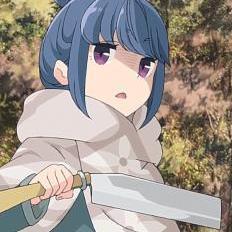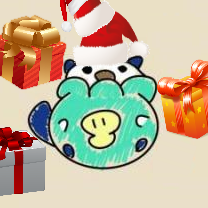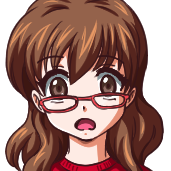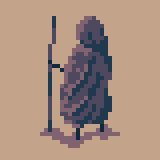Leaderboard
Popular Content
Showing content with the highest reputation on 09/23/20 in all areas
-

Hey y'all
Plk_Lesiak and 2 others reacted to Yukiru for a topic
Hi, I'm basically new to the forums as they are so I might as well introduce myself. Hobbies are reading manga, watching vtuber streams and sometimes even anime or playing eroge. I'm mostly a manga otaku lately, I like series like uhhh.... Houseki no Kuni and Yuru Camp, so both thought provoking stories or healing fluffs are good for me. Last VN I played was FLOWERS 3, and before that I tried some Umineko chapters... quite a mystery fanboy aren't I? Before those two there was probably some weird lewd game. Last manga I read was this one called "An easy introduction to love triangles," the last anime I watched was Kabaneri and last LN I read was this one called "Wandering Witch" kinda like Kino no Tabi but with a very different MC to give it a different kind of spice. As you may notice I like talking about myself without actually talking about myself, so to do some actual self-introducing, I like yuri, mahou shoujo, idols, mecha and mystery, but I'll take any kind of story if it's interesting. I can kinda understand Japanese but dlsite won't take my credit card so it doesn't do much for the eroge hobby. Oh right, I almost forgot, VNs I like are liar-soft's WAB series, Innocent Grey's FLOWERS, Leaf's Utawarerumono and Kogado's Symphonic Rain. Well, that should be it, gimme a shout if you wanna talk. There's an absurd amount of type-moon emotes now, I wonder who's to blame.3 points -
Hello :)
Mr Poltroon and one other reacted to Roadbrad for a topic
I'm not really good at introduction speeches (sorry). In spite of that, i'll describe myself. I'm enjoying visual novels for a long time. I used to play several like Phantom of Inferno, Kimi to Boku to Eden no Ringo, Memories Off, Da Capo 3, Clock Zero, Gakuen Club and Getsuei no Kusari. Currently, I'm more focused at gacha-based otome (and bishoujo). Lastly, nice to meet you, everyone.2 points -

Reflecting on my Otaku Origins
Happiness+ reacted to Clephas for a blog entry
I took my first steps onto the road of the otaku in 1992, when I watched the poorly dubbed (all dubs were godawful back then) Record of Lodoss War Volume 1 OVA VCR tape. Now, I was already a heavy fantasy addict, having been introduced to the Forgotten Realms and Dragonlance in 1990, and my obsession was at its peak at the time. When I watched Record of Lodoss War, I saw the typical 'elven maiden with human hero' romance in a new way (incidentally, this is a pretty typical romantic theme in those days, less so nowadays). I also saw oddities that stood out as odd to me precisely because of the oddly black and white point of view enforced on one by the various D&D universes. Of course, I was a chuunibyou brat by that time, already, so it should surprise no one that I got obsessed. It got ten times worse, however, when I encountered Chrono Trigger as it was played on my cousin's SNES. Chrono Trigger is still, to this day, one of the single best rpgs ever made. Looking back, considering all that has been done since then, it is almost TERRIFYING that someone was able to do what was done with Chrono Trigger with the limitations placed by using the SNES system. The story, the world, and the various layers of time were put together into such a subtly complex experience that, to this day, I've yet to see any other rpg manage it. Chrono Cross would manage to imitate some elements of this with its parallel world jumping, but Chrono Trigger's jumping around in time gave you impetus to explore how every aspect of the world could change based on how and when you did certain things. Rumors constantly abounded that there were secret endings (such as the infamous 'vampire Chrono' or 'Save Schala' fake rumors, which some believe led to the way the Chrono Cross storyline was handled), and people - such as me - would play the game repeatedly, using all the meager saves allowed by the cartridge limitations of the time, in hopes that they might trigger those endings or find a way to discover something new. In all honesty, Chrono Trigger being the game that got me into jrpgs probably ruined me for life. It set my standards to a ridiculously high level on a subconscious plane, resulting in me comparing every single jrpg experience since then to it. Aesthetically, musically, and structurally, it was a true jrpg kamige. It was also the game that turned jrpgs into my second otaku obsession. During the SNES-PS2 eras, I literally bought and played EVERY jrpg that came out. I still own them, in fact. I played most of the PS1 and SNES era games multiple times. However, it was also in the PS2 era (often called the 'dawn of the mainstream jrpg') that jrpg quality began to fall off drastically. The kind of genius and artistic flair using minimal resources you saw in previous eras was lost entirely within a few years of the release of FFX (FFX being a good game that also turned VO from a curiosity to a mainstream 'thing'). Musical direction, a role differing from composition, where someone was assigned to decide the timing of using a musical score and which ones fit which dungeons, which story scenes, disappeared in the middle of the PS2 era, as VO was used to fill the gaps of emotionality. However, this also meant that the subtlety of previous eras was lost with a swiftness that left me bewildered at the time. By the time the PS3 era came around, jrpgs were slowing down, due to what I now call 'flashy kusoge fatigue'. Oh, a few sub-genres, such as the Atelier series' alchemy obsessed SOL titles and the more action-based titles continued to be prolific, but what were called 'console-style rpgs' started to vanish. MMO elements were introduced into normal jrpgs, making progression and gameplay less interesting as a result (mostly because it seemed to have been done primarily to draw the WoW crowds into solo rpgs). Storytelling was dying a surprisingly swift death, as tedious gameplay elements (for loot and level-obsessed completionists) began to devour higher and higher proportions of each game's overall playtime. There is a very good reason why people go back and play so-called 'retro' jrpgs so much. There simply aren't that many more recent jrpgs that have that kind of flair and subtle genius. I know for a fact that one of the best ways to get people addicted to jrpgs is still just to let them play Chrono Trigger. Ironically, it was VNs that saved my soul. This was back in 2008, four years before I joined Fuwa. I was introduced to Tsukihime by a fellow anime fansubber, and, for the first time in over three years, I had something interesting enough (story-wise) that I was given a perspective on the nature of my growing irritation and fatigue with jrpgs in general. At the time, the JVN industry was still as vital and full of genius as the jrpg industry was in the PS1 era. Tsukihime and a few other major classics put out near the turn of the century had created the potential for a market of story-focused VNs that had allowed more and more creative people to get into the medium. Masada was releasing his latest version of Dies Irae, and there were literally hundreds of potentially interesting VNs for me to try. Needless to say, I lost my mind almost as badly as when I first played Chrono Trigger. I must have blown four grand of my meager savings on VNs within the first year, and I didn't regret a penny of it. Yes, roughly two-thirds of what I bought was pure crap. However, the gems I discovered gave me a taste of the potential of the medium in a way that was horribly addictive. Moreover, after a few years of being starved of any decent new stories, even the worst VNs had something that I could find I liked about them. In retrospect, I have an addictive personality. I get addicted to things easily, especially when they scratch my story bug. People have said to me, when it came to my jrpg obsession 'if you want a good story, why don't you read a book?', to which I usually gave them a blank stare and said 'I'm already reading good books. I just want stories in my games too.' Interestingly enough, there were a few bursts of true creativity in jrpgs in the years since, like Tales of Berseria and Nier: Automata, but they partially stand out due to the sheer bleakness of the genre landscape. People praise Octopath Traveler and Dragon Quest XI with intensity, and they practically worship Bravely Default. However, I have been shocked at how low-quality the presentation of these stories has been. It's like an entire generation has gotten used to ineptness in presentation to the point where they can be charmed by backhanded efforts at retro-nostalgia. Octopath has all the grind of the old SaGa Frontier games with none of the charm, the best part of each of the paths being at the beginning. Dragon Quest XI retains the horribly grindy nature of Dragon Quest games without improving on the formula in any real way. Moreover, locking so much content into the post-game annoys the hell out of me (I prefer new game +, obviously). JVNs have suffered their own decline, which is ironically due to the same demographics that inflated the medium in the first place (the dominance of the moe/charage lovers). VNs were always destined to be a niche medium, but the over-specialization of the industry has led to an inability to adapt to changing spending habits and demographics. Even if they wanted to regear for a new generation of consumers, most companies no longer have the access to the necessary talent to do so. I'm fairly sure that jrpgs suffer from a similar lack. Yes, there are some excellent composers and graphic designers in the jrpg industry, as well as access to the solid voice-acting industry of Japan and the growing one here in the US. However, there is a severe lack of writers capable of bringing a story to life, and there is no point in a top-tier OST that has no one to properly coordinate its use. The very fact that something like Undertale could bury so much of the commercial rpg industry, in the eyes of rpg fans, says everything about how far the industry has fallen. So what am I getting at? Not really anything, in truth. I just needed to blow off some steam. Thank you for reading.1 point -
The recent discussions about Umineko here on the forum made me want to pick up the whole damn thing again. Only this time I'm going spend even more time on it because I'm taking notes. I'll take the game's advice though and not focus on the howdunnits (which it argues are trivial and unimportant), but rather on what meaning is hidden inbetween. I'm doing this mostly for myself, though every now and then I might feel like turning my thoughts and interpretations into a blog post like this one. The German realist author Theodor Fontane (1819-1898) once said "the first chapter is always the main point, and within the first chapter the first page, almost the first line." While I think he is exaggerating a little bit and tbh I only opened with a quote of his to get a chance to mention how much I hate his writing (some of his novels are required reading in high-school in parts of Germany), it is true that the opening to a novel or any piece of fictional media can be a more important part of the work than it is often given credit for. Which brings us to Umineko's first scene. While it might not be the most spectacular example out there, I think it does what it sets out to do so well that it is worth taking a look at it from an analytical standpoint. I'm going to mention one or two twists that happen at later points in the VN, so you might not want read any further if you do not want to get spoiled. The scene takes place at an unspecified point in time in Kinzo's study with him, Nanjo (his doctor) and Genji (his head servant) present. It starts out with Nanjo telling Kinzo to lay off the alcohol as the medicine he prescribed to keep him alive won't work otherwise. Kinzo responds by saying the liquor (which has a sweet scent and a venomous green colour) has been with him longer than Nanjo, and that it is what is actually keeping him alive, not the medicine. Then he orders Genji to serve him another glass, but water it down a bit. Kinzo asks Nanjo how much time he has left, to which the doctor replies by comparing it to their chess match which is apparently entering its final stages and where Kinzo managed to corner Nanjo's king. The physician suggests Kinzo should write a will, which the latter one heavily objects to: "...And what is a will, Nanjo? Handwritten instructions to the vultures on how to devour and scatter my corpse?" He wants to leave nothing behind and insists everything he built up during his life shall disappear with him, as it is part of the deal he made. He goes on to speak about his only regret, which is not being able to see the smile of the witch Beatrice once more, resulting in him screaming at thin air offering his remaining life to her for her to appear before him one last time. Opening Credits roll. The main thread running through the scene is a lingering conflict between what is "real" and what isn't, already introducing one of the main themes of the VN. This starts with the setting and props: There is no real indication if what you see takes place in the real world or some fantasy realm nor does it properly fit into any specific timeframe. The occult study, Kinzo's gown and the venomous green liquor all make the whole scene look surreal, but then there is also a real world physician doing standard medical examinations. In this sense the whole dialogue between Nanjo and Kanzo can be read as a conflict between material reality and fantasy, with Nanjo and his medicine or science representing the former and Kinzo having completely embraced the latter. Nanjo tries to bring Kinzo to care about his own physical wellbeing and his remains (stand-ins for material reality), both of which the latter one doesn't care at all about. The liquor in this context is basically a metaphor for fantasy. It has an inviting scent but looks like venom. It poisons Kinzo and according to him is what actually keeps him alive at the same time. His addiction turns his health and life miserable (as well as those of his children), while it is also what keeps him going. The booze or rather fantasy keeping him alive is also rather funny imo considering we later learn that, while he is part of all the "non-real" scenarios, in "real life" he has already been dead for quite a while. [It has been some time since I read the VN the first time so I don't really remember if the booze motif gets used at other points but it is one of the things I am going to keep an eye on this time around.] One of the main and more obvious purposes of an opening scene is to make the audience want to read on, usually by using a narrative hook. In this case it is the question about Beatrice's existence. You immediately ask yourself what the deal is with a witch that might or might not be real and that some weird and menacing old man is apparently trying to summon. Her (non-)presence is one of the main threads running through the whole VN and it gets established in the very first scene. This hook also ties right back into the overarching uncertainty of the scene about what is "real" and thus one of the main themes of the VN. The whole scene imo exemplifies pretty well what Umineko excels at, namely tying its separate narrative layers together. From the outset, characterization, plot, horror, fantasy, metaphor and theme are never truly separable but form a coherent and interwoven whole. I only implicitely talked about characterization and didn't even talk about why Genji is present in the scene at all or about the introduction of the chess motif (or the Kinzo being dead before the end of the game part). But since I already spent too much time writing this I'll keep it with one of Umineko's core messages and let you figure out how these things tie into the rest yourselves.1 point
-
Glad to see that the Umineko discussion thread inspired relooking at the VN. @Mr Poltroon's post in the thread was great to read through, and likewise its interesting to relook at the opening scene. Personally when I first read the opening scene, I remember wondering why it started this way. Looking back at it in retrospect it makes more sense though. Especially once you have a greater understanding and context of who Kinzo really is, and his role in the rest of the story. I'm interested in the observation in whether alcohol holds any consistent motif or not. Off the top of my head I know that Bernkastel is quite fond of good alcohol and so is Beatrice. In fact there are some pretty great scenes of Beatrice getting drunk. But I don't know if that's relevant to your curiosity around the use of alcohol.1 point
-

MangaGamer 2020 Licensing Survey
Nandemonai reacted to Silvz for a topic
guys, that whole 'MG hates the fans" is like from last year? Maybe before? They've moved on, the community has moved on, so do it too. Every company talks about their custumers, they only had the bad luck of having it leaked. MG does a lot of good for the localization scene, providing a good quality job and a good selection of games.1 point -

Penlight [16+] [BxG] [Free / Donate] (Latest Release: April 13th 2024)
Chronopolis reacted to Angela DeMille for a topic
New public release time! Since last month Penlight's had a lot of little changes and updates. There's script edits, another load of new CGs, a few little additions to storylines old and new, and the full translation of the game into Spanish! There are some issues with the script in its current version, but Spanish readers should now be able to read and enjoy Penlight and I'm proud to be able to offer that to people in what is still a free indie visual novel ^^ I really hope there are people out there who will find it useful. But back to the other stuff. Nozomi's main storyline got some significant edits to strengthen the narrative and fix an inconsistency or two. The villainy stuff got another looking over as well, with the Robot storyline getting a new scene and Sleeper Agent a new ending that I'm not totally pleased about, but whatever. It's something. Also, Hiroko's most recent storyline might also be worth reading again just for the new art that got added this month~ Oh, and following from the progress I made on the Reversal storyline last month, I made a start on another anticipated storyline this time. It's the part where Kyou suggests turning Sayori into a doll o.o There's a scene or two to get things started, and there'll be more to come next month. Should turn out to be fun~ As usual, you can find this month's release in PC, Linux, Mac and Android versions, on my Patreon or itch.io pages. I've also linked the most recent flowchart guide on the public news post on Patreon. That's all for now. Hope you folks enjoy the update and I'll see you next time! What's New New CG for Nozomi's route, near the beginning TWO New CGs for Hiroko's route, on the "Ticklish Hands" storyline New CG for the third of Sayori's Alter storyline endings New CG for the Villainous Robot storyline Spanish localisation: The entire game is now playable in Spanish! Expanded the Robot path by making some script edits and adding a whole new scene Edited a number of scenes on Nozomi's Trance storyline Completed a version of the alternate ending on the Villainous Sleeper Agent storyline where Kyou chooses to fight Began writing the Doll storyline on Sayori's route Added music and ambient sound to Hiroko's "ticklish hands" storyline ending scene Added one new piece of music. It plays during the first scene of Sayori's Doll storyline Added a language select screen when people start the game for the first time Inserted a disclaimer message that appears at the start of the game Fixed several bugs in the CG gallery that prevented certain CG variants from unlocking Fixed a display bug that occurred during Nozomi's Reversal storyline Word count is now around 217,500 The usual miscellaneous spelling and grammatical corrections Known Issues Changing the language on a line where an animation occurs (like screen shake) will throw up an error1 point -

Roadwarden [Fantasy/RPG Elements/Pixel Art] [Full Version Released!]
Chronopolis reacted to Aureus for a topic
You can now find the newest Roadwarden devlog on https://moral-anxiety.itch.io/roadwarden/devlog/176144/invisible-milestones-roadwarden-devlog , with updates on the new approach to the character’s goals, the crossbow rework, the heart of the forest, the game’s release date, and more!1 point -

Roadwarden [Fantasy/RPG Elements/Pixel Art] [Full Version Released!]
Chronopolis reacted to Aureus for a topic
In the original “Roadwarden’s” Design Document, there were no game-overs. You could get significantly hurt during your journeys, but never to the point where you’d face a brick wall that would make the further progress impossible. You need to rest and heal your wounds to participate in some events, but you can always move forward. I’ve finally decided to change it. In most situations, reaching 0 HP won’t result in an instant death. But in some scripted encounters - usually when facing an overwhelming opponent while being completely unprepared - your character will be broken. Still, I hope to make it as player-friendly as possible. Did you forget to save your game? Was autosave ran in an inconvenient spot? You can jump back in time a bit, no strings attached. The game now also involves some new systems, like a redesigned “armor level”. I’ll talk more about it in the next devlog.1 point



